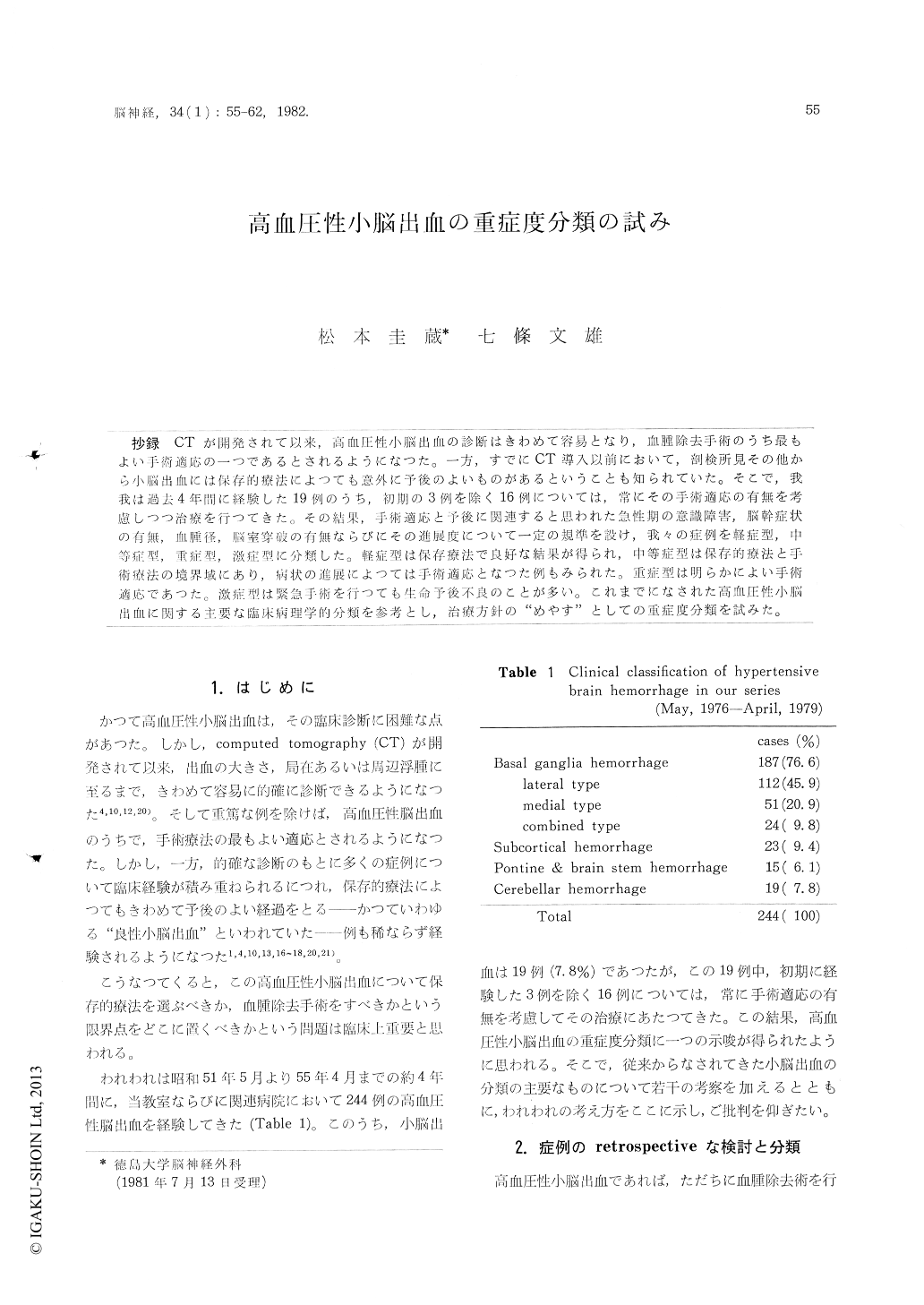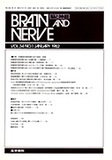Japanese
English
- 有料閲覧
- Abstract 文献概要
- 1ページ目 Look Inside
抄録 CTが開発されて以来,高血圧性小脳出血の診断はきわめて容易となり,血腫除去手術のうち最もよい手術適応の一つであるとされるようになつた。一方,すでにCT導入以前において,剖検所見その他から小脳出血には保存的療法によつても意外に予後のよいものがあるということも知られていた。そこで,我我は過去4年間に経験した19例のうち,初期の3例を除く16例については,常にその手術適応の有無を考慮しつつ治療を行つてきた。その結果,手術適応と予後に関連すると思われた急性期の意識障害,脳幹症状の有無,血腫径,脳室穿破の有無ならびにその進展度について一定の規準を設け,我々の症例を軽症型,中等症型,重症型,激症型に分類した。軽症型は保存療法で良好な結果が得られ,中等症型は保存的療法と手術療法の境界域にあり,病状の進展によつては手術適応となつた例もみられた。重症型は明らかによい手術適応であつた。激症型は緊急手術を行つても生命予後不良のことが多い。これまでになされた高血圧性小脳出血に関する主要な臨床病理学的分類を参考とし,治療方針の"めやす"としての重症度分類を試みた。
Hypertensive intracerebellar hematomas are now readily diagnosed with CT examination and are considered to be one of the good indication for surgical intervention except for extremely severe cases. On the other hand, it has been known that there are also experienced benign cases treated conservatively with good prognosis. Therefore, it seemed to be necessary a certain proposal of the criteria for the choice of the management of them whether conservative treatment or surgical removal of the hematoma should be selected.
For the last 4 years a consecutive series of 16 cases of hypertensive intracerebellar hematomas were treated in our group of neurosurgical services. The clinical sympotms and CT findings in acute stage of these cases were analized and correlated with their clinical course and prognosis retrospec-tively. And plannings of their management were discussed with the review of previous literatures concerned with the grading or classification of this hematoma. As a conclusion of this paper, following clinical classification were obtained and proposed.
1) Mild type : Consciousness is alert or somnolence. Brain stem symptoms and ventricular dilatation are absent. The diameter of the hematoma is less than 3 cm by CT examination. This type can be expected full recovery only with con- servation treament. Immediate surgical inter- vention should be avoided.
2) Moderate type : Consciousness is alert or somno- lence. The diameter of the hematoma is more than 3 cm by CT examination. Brain stem symptoms or ventricular dilatation may be ob- served. Choice of the treatment of this type would be either conservative or surgical. However, the latter seems to be preferable be- cause of early amelioration of the symptoms and better functional prognosis.
3) Severe type : Consciousness level is stupor or semicoma. Cases of progressive lowering of the consciousness is included. This type is indicated surgical. Suboccipital craniectomy with evacua- tion of the hematoma or/and continuous ventri- cular drainage are indicated.
4) Fulminant type : Consciousness is coma in early acute stage. Surgery may be difficult in many cases of this type because of rapid deterioration. However, merrit of operation seems to be ex- isted, because there are sporadic successful cases reported.

Copyright © 1982, Igaku-Shoin Ltd. All rights reserved.


